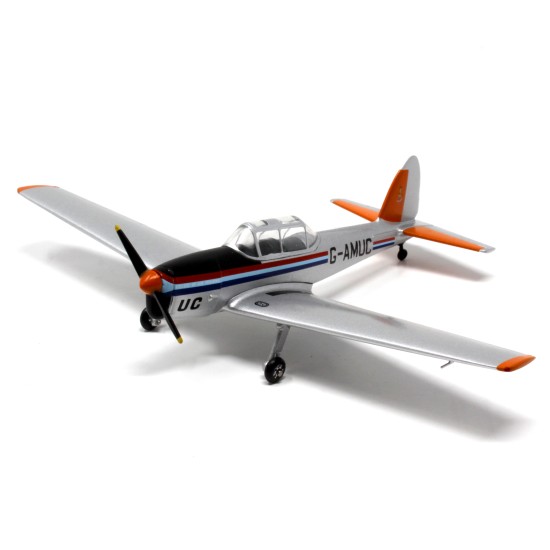
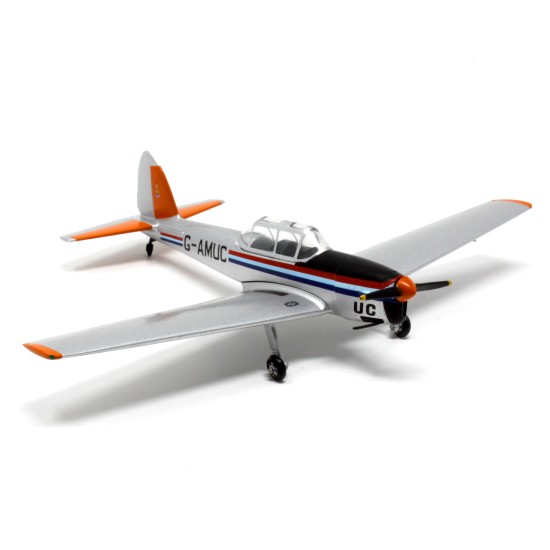
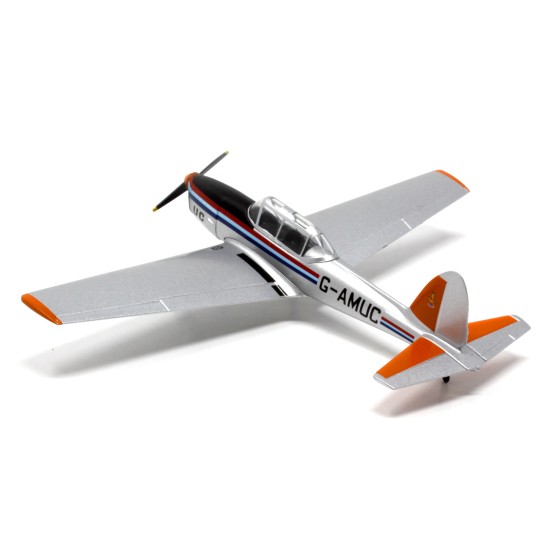
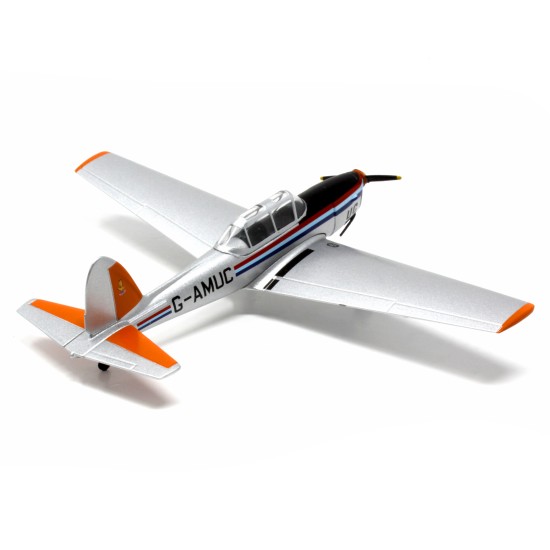
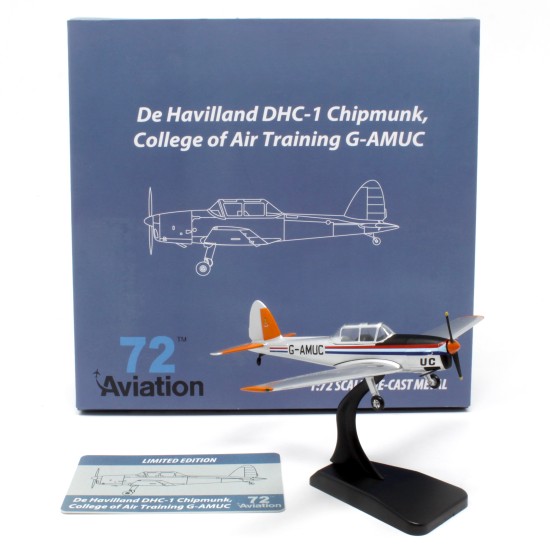





1/72 DHC1 CHIPMUNK COLLEGE OF AIR TRAINING G-AMUC
Designed and developed immediately after World War II, by de Havilland Canada, as a trainer replacement for the de Havilland Tiger Moth biplane, the DHC-1 Chipmunk first took to the skies at DHCs Downsview base, near Toronto, on 22nd May 1946. Into service within months, the Chipmunk was procured in large numbers by the Royal Canadian Air Force (RCAF) and Royal Air Force (RAF). Now, nearly 80 years after the type first entered service, hundreds of Chipmunks remain airworthy and are in operation around the world.
A total of 1,283 Chipmunks were built - 217 by de Havilland Canada, until production ended in 1956, and 1,000 were built under licence by de Havilland itself - initially at Hatfield Aerodrome before production was transferred to Broughton, near Chester. A further 66 were manufactured by OGMA (Oficinas Gerais de Material Aeronautico), at Alverca in Portugal from 1955 to 1961, for the Portuguese Air Force. Amazingly, six are still in service with the Forca Aerea Portuguesa today!
The prototype was fitted with the air-cooled Gipsy Major 1C, but production aircraft in Canada (designated T.1 and T.2) were fitted with the Gipsy Major 8. Those produced in the UK (T.10) also had the Gipsy Major 8. The RAF took 735 T.10s, seeing action with the Royal Navy and Army too, and 217 were exported and redesignated as Mk 20s. The Mk 21 was the civilian production version - 28 were built.
Many Chipmunks that had been in military use were sold to civilians when they were struck off charge, either to private owners or to companies. Typically, these were used for a variety of purposes, often involving the types excellent flying characteristics and its capability for aerobatic manoeuvres.
Towing gliders and crop spraying have been two areas where the Chippies talents are still used today. Conversion to civil use saw the T.10 redesignated as Mk 22, with five converted for agricultural spraying duties as Mk 23.
One of three Chipmunk models released wearing the colours of the College of Air Training. Formed in 1960 to train pilots for the national airlines, BOAC andBEA (later to come together and become British Airways), it started with anintake of 21 students and was officially opened by the Duke of Edinburgh in 1961.To gain their commercial pilot's licence, the student pilots first trained in the Chipmunks and the course they took was equivalent to degree standard today.
Successful candidates first undertook ground school training, progressing on to flyingtraining with an instructor in a single-engine Chipmunk (these were replaced in 1967 by Piper Cherokees). This version wears the registration G-AMUC - the real aircraft was de-registered in 1976 and shipped to the USA. Limited edition.
A total of 1,283 Chipmunks were built - 217 by de Havilland Canada, until production ended in 1956, and 1,000 were built under licence by de Havilland itself - initially at Hatfield Aerodrome before production was transferred to Broughton, near Chester. A further 66 were manufactured by OGMA (Oficinas Gerais de Material Aeronautico), at Alverca in Portugal from 1955 to 1961, for the Portuguese Air Force. Amazingly, six are still in service with the Forca Aerea Portuguesa today!
The prototype was fitted with the air-cooled Gipsy Major 1C, but production aircraft in Canada (designated T.1 and T.2) were fitted with the Gipsy Major 8. Those produced in the UK (T.10) also had the Gipsy Major 8. The RAF took 735 T.10s, seeing action with the Royal Navy and Army too, and 217 were exported and redesignated as Mk 20s. The Mk 21 was the civilian production version - 28 were built.
Many Chipmunks that had been in military use were sold to civilians when they were struck off charge, either to private owners or to companies. Typically, these were used for a variety of purposes, often involving the types excellent flying characteristics and its capability for aerobatic manoeuvres.
Towing gliders and crop spraying have been two areas where the Chippies talents are still used today. Conversion to civil use saw the T.10 redesignated as Mk 22, with five converted for agricultural spraying duties as Mk 23.
One of three Chipmunk models released wearing the colours of the College of Air Training. Formed in 1960 to train pilots for the national airlines, BOAC andBEA (later to come together and become British Airways), it started with anintake of 21 students and was officially opened by the Duke of Edinburgh in 1961.To gain their commercial pilot's licence, the student pilots first trained in the Chipmunks and the course they took was equivalent to degree standard today.
Successful candidates first undertook ground school training, progressing on to flyingtraining with an instructor in a single-engine Chipmunk (these were replaced in 1967 by Piper Cherokees). This version wears the registration G-AMUC - the real aircraft was de-registered in 1976 and shipped to the USA. Limited edition.
£34.99
Ex Tax: £29.16
- Stock: In Stock
- Model: AV7226019
- Weight: 500.00g
- SKU: AV7226019
- MPN: AV7226019

